
In India, 1.3 billion people have been locked down for more than a week to curb the spread of the coronavirus. The country reports nearly 2,000 cases and at least 50 deaths. Millions living in poverty and migrant workers were stranded far from home when the lockdown was announced, and some have reportedly died making the perilous journey home. More than 80% of India’s workforce is informal, with most living off daily wages often less than $2 or $3 a day — wages they cannot earn under the present curfew — and more than 4 million Indians are homeless. We speak with Indian journalist Rana Ayyub, a contributing global opinions writer for The Washington Post. Her recent piece in Foreign Policy is headlined “Social Distancing Is a Privilege.”
Transcript
AMY GOODMAN: This is Democracy Now!, democracynow.org, The War and Peace Report. I’m Amy Goodman, with Nermeen Shaikh. We’re broadcasting from the epicenter of the pandemic in the United States, in New York City. But we’re turning now to India, where 1.3 billion people have been locked down for more than a week to curb the spread of the coronavirus. India is now reporting nearly 2,000 cases and at least 50 deaths.
Prime Minister Narendra Modi apologized Sunday for the devastation India’s 21-day curfew has wrought for millions of people living in poverty and migrant workers who were stranded far from home when the lockdown was announced. Some have reportedly died making the perilous journey home.
Last week, Modi’s government announced a $22.6 billion stimulus plan to provide cash payments and food to people in need. More than 80% of India’s workforce is informal, with most living off daily wages often less than $2 or $3 a day, wages they cannot earn under the present curfew. More than 4 million Indians are homeless. One homeless man in Delhi told Reuters, quote, “I would rather die from disease than hunger,” as he joined dozens of others forced to congregate on the streets for free food distribution. Millions more of India’s poor have been devastated by the lockdown. This is Zahid Ali, who lives in a slum in the country’s capital, New Delhi.
ZAHID ALI: [translated] Everybody is disturbed here. Children of many people are sick, but they do not have the money or the means to take them to the hospital — no rickshaw, no vehicle, nothing. When they return to their houses, there is no food. So what will one do? And what will one eat? This is hopeless. It is better altogether to just kill people.
AMY GOODMAN: Well, for more, we’re joined by the Indian journalist Rana Ayyub. She’s global opinions writer for The Washington Post. Her recent piece in Foreign Policy is headlined “Social Distancing Is a Privilege.”
Rana, welcome back to Democracy Now! Tell us where you are in India.
RANA AYYUB: Thank you, Amy.
AMY GOODMAN: And can you describe the situation there now?
RANA AYYUB: Well, Amy, great to be joining the show again. I’m in Mumbai, and I’ve been reported from the city, especially from Dharavi, one of Asia’s largest slums, with a population of close to 1 million people in one square mile. And yesterday we had our first COVID-rated death in the slum. And I can only imagine the consequences of this. I was there about five days ago in Dharavi, where even talking about the concept of social distancing seems like an obscene concept, because here we have close to seven people living in one shanty with absolutely no access to water, soap, sanitation. How do you talk to them about social distancing and cleanliness and hygiene?
And the people who live there earn not more than about $2 a day, daily wage workers, hand-to-mouth existence. But, I mean, you rightly pointed out that many of them say that they’d rather die of the disease than of this hunger that has now been inflicted on them, because the government announced a lockdown on the 24th of March 24 at 8 p.m. in the evening, and that has only led to chaos. The visuals that you see, not just in Bombay, but across the country, are migrant laborers, workers, traveling all the way from the cities to their home towns, traveling thousands of kilometers, some with children on their backs, starving, without footwear. I mean, it’s not a sight to behold. And right now where I am, in Bombay, another 80 people have been quarantined in a separate slum.
So, yes, like I wrote in my piece, social distancing is privilege in India, because there is a structural divide. The privileged people in India, who, you know, have already have stocked their refrigerators, they have hand sanitizers, but the underprivileged, which is about 60% of this country, cannot afford this, cannot afford social distancing. Amy?
AMY GOODMAN: Yes. Nermeen?
NERMEEN SHAIKH: Yeah, Rana, I mean, as you just mentioned, the lockdown that Modi imposed at 8 p.m. last week led to this mass migration from cities to rural areas. And as you write in your Foreign Policy piece, when the lockdown began, a 32-year-old man was beaten to death by cops in West Bengal —
RANA AYYUB: That’s right. That’s right.
NERMEEN SHAIKH: — when he stepped out to buy milk. All the —
RANA AYYUB: That’s right.
NERMEEN SHAIKH: Could you talk about that, as well as the other kinds of police brutality that migrants have been subjected to, including being sprayed with a bleach disinfectant?
RANA AYYUB: That’s right, Nermeen. About close to five days ago, just about two days after the lockdown was announced, a man who stepped out of his house to buy milk for his children was brutally beaten by the police, and he died once he reached home. There are many who were subjected to police brutality all over the country, you know, especially migrant laborers. Some laborers who were on their way from the city to the village were sprayed with disinfectants and bleach. Now, this is such a contradiction from the upper-middle-class Indians who were literally airlifted from various countries and flown into India, and they were checked in, and the poor were sprayed — they sprayed bleach on them. So there is a disparity. There is a way — there’s a differential treatment between the rich and the poor. I mean, also look at the government hospitals in India, where the poor will now go for the treatment. The WHO recommends that India needs to have one doctor to every thousand patients. We have one doctor to 10,000 patients.
So, we have a million problems right now plaguing us, and the police brutality and the insensitivity, and the insensitivity of the Indian state — of course, it announced a lockdown, and that was perhaps the only solution that India could afford right now in a situation like this, but I think India could have done a lot better. For instance, the first COVID case in India was diagnosed on the 31st of January, and India took a month and a half to declare a health emergency, on the 15th of March. Between this time, India was hosting Donald Trump, and millions of rupees were spent on this entire Trump-Modi bonhomie and the latest programs. In the middle, India was dominating international headlines for the anti-Muslim carnage in New Delhi, while in neighboring China they were already fighting the virus. So India woke up to this pandemic a little too late, and we are staring at a grim future. Also, to be fair to the government, now they are taking much-needed steps. It’s a little too late, though, in the day.
NERMEEN SHAIKH: And, Rana, could you talk a little bit more about the health — broader health issues in India? You point this out also in your piece in Foreign Policy, that India spends just 3.7% of its GDP on health. And just by way of comparison, the U.S. spends 17% of its GDP on health, and yet we’ve seen how devastating the situation is in the U.S. in terms of its response to COVID-19. So that’s one issue. And the second is that only one-fifth of deaths in India are even recorded including with causes, so it might be, even in the future, very difficult to say how many people in India have died from COVID-19.
RANA AYYUB: Absolutely, Nermeen, you’re right, because India, one of — India has seen millions of cases of respiratory diseases. It is home to some of the highest cases of diabetes and hypertension. Tuberculosis is something — thousands of Indians die due to tuberculosis and the fact that we have still not ramped up our healthcare. I mean, as of today, India has tested only about 35,000 people in a country of 1.3 billion population, which means India is not testing enough. Like various epidemiologists have suggested and various doctors and healthcare specialists in India have suggested, that it will be impossible to gauge whether Indians are dying of respiratory diseases or COVID-related symptoms, because, one, we’re not testing enough, and, second, our healthcare system is not good enough to have taken care of the diseases that mostly plague the underprivileged in this country.
So, that’s something that we really need to look at, because, I mean, while the country was facing some of its worst healthcare problems, the government of India has had different priorities. It was spending billions of rupees constructing statues of Lord Ram in Uttar Pradesh, where children are dying of encephalitis and there are no oxygen cylinders in the hospital; in Gujarat, where the tallest statue of Sardar Patel was constructed in a show of jingoism and nationalism. So, throughout this show of nationalism, when the government was spending billions of rupees on statues, which is not needed, India could have spent the same amount of money on its healthcare. When 1.3 billion people of your population, and out of it 60% live below the poverty line, you cannot afford to be insensitive to a prospective pandemic like this, which has now hit us. And we are in a very bad shape, as I talk, Nermeen.
AMY GOODMAN: We want to thank you, Rana Ayyub, for joining us. Rana Ayyub is an Indian journalist, global opinions writer for The Washington Post, author of Gujarat Files: Anatomy of a Cover Up. Her recent piece in Foreign Policy is headlined “Social Distancing Is a Privilege.” We will link to that article in Foreign Policy.

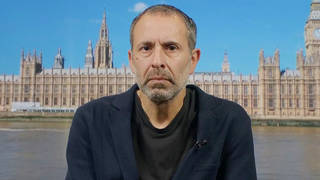
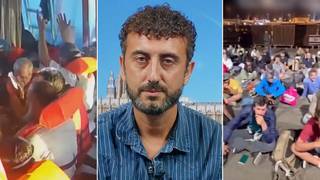
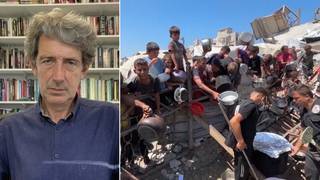
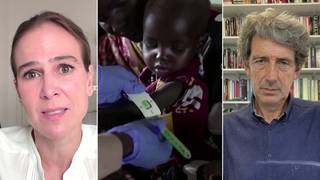



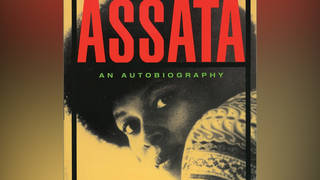

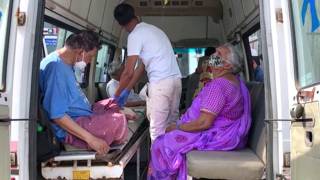
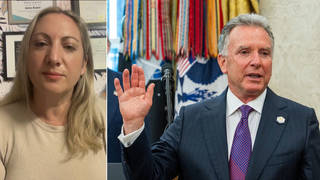
Media Options